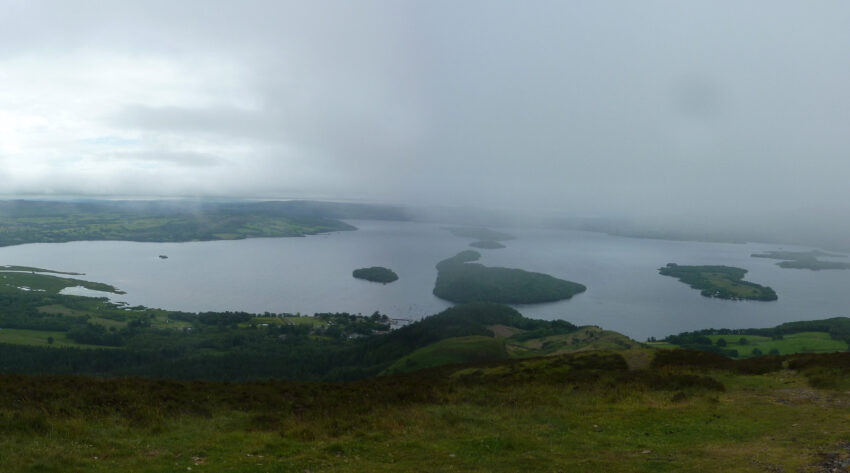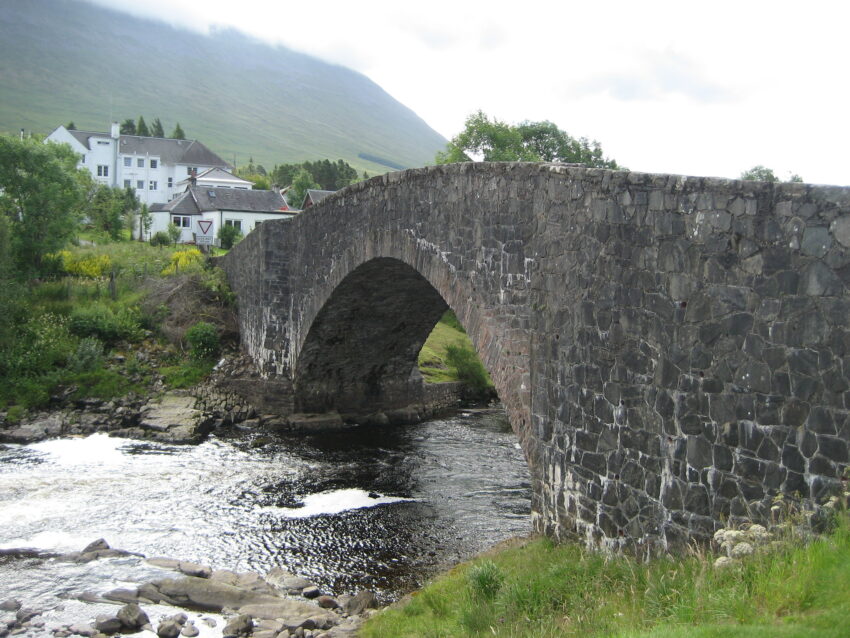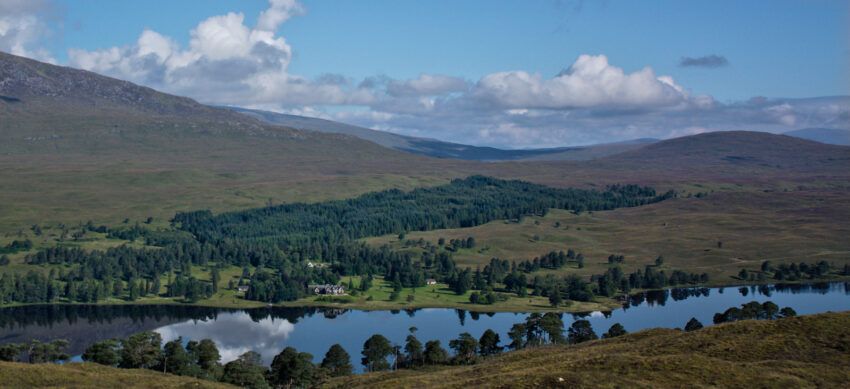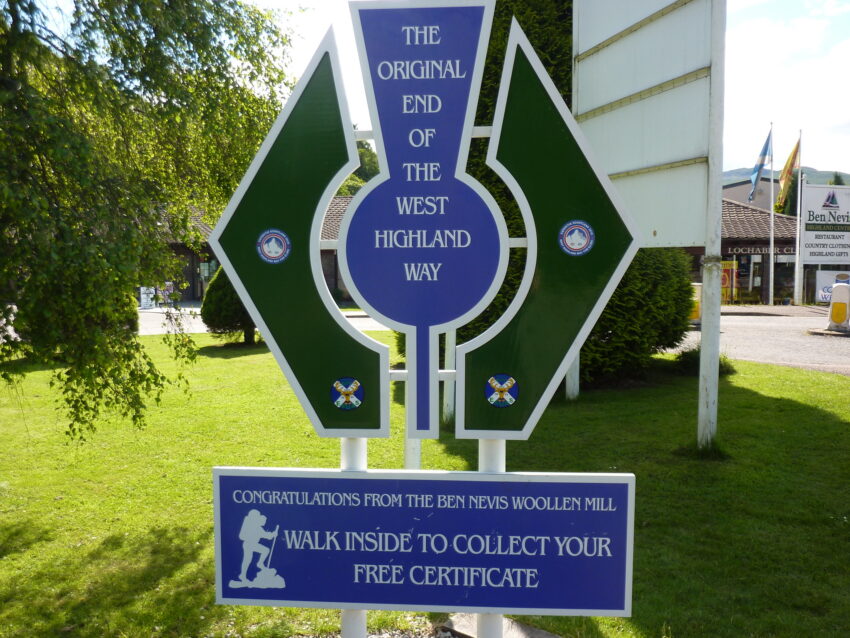
West Highland Way, Scotland, gives you a once-in-a-lifetime experience not only filling your senses with outstanding landscapes, but also offering history and cultural heritage. The Scottish West Highland Way is a mixture of blanketing green Lowlands and rocky, towering mountains.
The walk extends across 152 km, with a wide variety of sceneries. It cuts a route from the outskirts of Glasgow, near the shore of Scotland’s largest loch. Then, you pass through open moorlands and finally arrive at Britain’s highest mountain: the overlooking Ben Nevis. There’s certainly no better way to immerse yourself in Scotland’s scenery. So stock up your supplies and get ready for the diversity the West Highland Way has waiting for you.

Activity/Place Highlights
Milngavie to Drymen (19 km)
This first section of the path is mostly flat landscapes, a good appetizer for the West Highland Way’s diversity. With Allander Water keeping you company, the path reaches the edge of Mugdock Wood. Then it keeps on going past Craigallian Lock, with the characteristic Dumgoyach hill standing behind.

A short walk through the grassy Tinkers Loan, and then you get to climb up a stile to get a glimpse of the wilder landscapes you are about to walk into. The flatland at Campsie Fells, the rocky Strathblane Hills, and the bumpy heap of Dumgoyne ahead.

Drymen to Rowardennan (22.5 km)
Those wilder landscapes become real the next day when you start the second section of the walk from Drymen. In this section, the path goes over wide moorland and rises 361 meters to the top of Conic Hill. From the top, you see how high mountains and deep waters blend into one, with Loch Lomond reaching to what seems like infinity. Towering mountains like Ben Vorlich, Ben Vane and the Luss Hills reach up to the clouds.

From up there, you can also get to see the variety of islands dotting the loch. All of them are part of the Highland Boundary Fault, which extends 260 km from the west at Arran to the east at Stonehaven. They draw a clear line between Highland and Lowland. From that point, the path crosses the heart of the Highlands, with the ever-present tall, granite mountains.
After leaving Conic Hill behind, the path goes along the Loch Lomond banks, swerving through re-established native woodland, through rocky bays and beaches dotted with crooked trees. Before getting to Rowardennan, the last point of this second section of your journey, the 914-meters-high Ben Lomond comes into view, and you’re ready to call it a day.

Rowardennan to Inverarnan (22.5 km)
Now you start the third section of the walk, the last Lowland part of the walk, with its only point being 100 meters high. However, as you leave the forestry track at the beginning, it quickly turns into rougher, rocky floors, so be careful where you step between the jutting rocks and boulders. Definitely, the highlight of this section of West Highland Way is the waterfall at Inversnaid. And as the walk takes a footbridge over it, you can closely get to see the waters flowing down right into Loch Lomond. If you pay attention during this section of the path, you may get to see the Golden Eagle and the Osprey; two beautiful and locally famous birds of prey.

Inverarnan to Tyndrum (19.5 km)
Starting the fourth section, you notice history is deeply attached to the West Highland Way. Even though the beautiful landscape gives you a sense of tranquility and calmness, the region once lived under conflict. There were violent raids to steal livestock and clans fought for territory. Not far after Loch Lomond, you will find General Wade’s military roads; what remains of his struggles to link the Lowlands and Fort William.
When you leave the Tyndrum village, you start the fifth section of the West Highland Way. The extensive valley overlooked by the towering bulge of Beinn Odhar seems as threatening today as it surely did for the soldiers who marched along the ruined but still cobbled road.

Tyndrum to Iveroran (14.5 km)
Now you’re passing along the skirts of the sheer Beinn Odhar, with the pyramid of Beinn Dorain standing right ahead. Then, you reach the strong and arched Bridge of Orchy, leading forward to wide valleys. Definitely the wildest and most remote section of the walk with its isolated smaller lochs and dark peat bogs.

The walk gently goes down and joins the head of the impressive and tragic Glen Coe, where a bloody massacre took place in 1692. A short and easy climb up the hill and you will get the most memorable views over Loch Tulla. Beyond, outlying and unknown, the Rannoch Moor attracts all your attention.

Inveroran to Kingshouse (16 km)
Leaving Inveroran marks the beginning of the sixth section, rising to the edges of Rannoch Moor, one of the last great wilderness of West Highland Way and Europe. On good days, this part of the walk is as easy as it can get, so make sure the weather is on your side at the time of your visit. Being exposed to the elements might be tough on this open ground.

A short walk to your left and you find the ruins of Ba Cottage, a perfect place for a lunch break. Finally, the old military road brings you to Kingshouse, with the magnificent Buachaille Etive Mor beckoning, one of Scotland’s most photographed mountains.

Kingshouse to Kinlochleven (14.5 km)
On the seventh section, the West Highland Way climbs up the famous Devil’s Staircase. But don’t worry, this zig-zag route is way easier than the name suggests. It gradually ascends to the highest point of the way, and there you stand 550 meters closer to the sky. From there, the path then descends the rocky mountain and reaches the village of Kinlochleven.

Kinlochleven to Fort William (24 km)
At last, the final section of the walk ascends across woods, giving you stunning views over Loch Leven. Old abandoned farms dot the lonely Lairigmor, prevailing as reminders of the past. The trail finally slopes down and into conifer plantations. And Britain’s highest mountain Ben Nevis comes into view until the path drops into Glen Nevis. Not far from there, the town of Fort William marks the end of your 152-km long journey, where celebrations await.


How to get there
It only takes a ten-minute train trip from Glasgow to get to Milngavie, where a distinctive obelisk, completely made of granite, marks the starting point of the walk.
When to go
Get there in May and September and you’ll find the best face of the weather on your path.
How long
The walk along West Highland Way generally takes around six or seven days, but it can be extended to ten days.
Planning
Summer is when it gets the busiest, so booking accommodation in advance is recommended.
Inside Information
Macs Adventure provides guided and self-guided trips, handles all accommodation booking and takes care of your baggage transfers between sections. They also organize transfers back to Glasgow once you finish the walk, but you can decide to take rail and coach services, as they depart from Fort William daily.
History
The West Highland Way is Scotland’s first long-distance walking track. It was officially opened in 1980, essentially based in older routes and more recent railway tracks that lie abandoned nowadays. Every year, over 50.000 walkers head off from the south and embark on this journey.

If you loved this article or found it useful, don’t forget to share it with your adventurous and travel-hacking friends! If you want more posts like this, follow us on Youtube, Instagram, Pinterest, Twitter or Facebook and subscribe to our newsletter!

